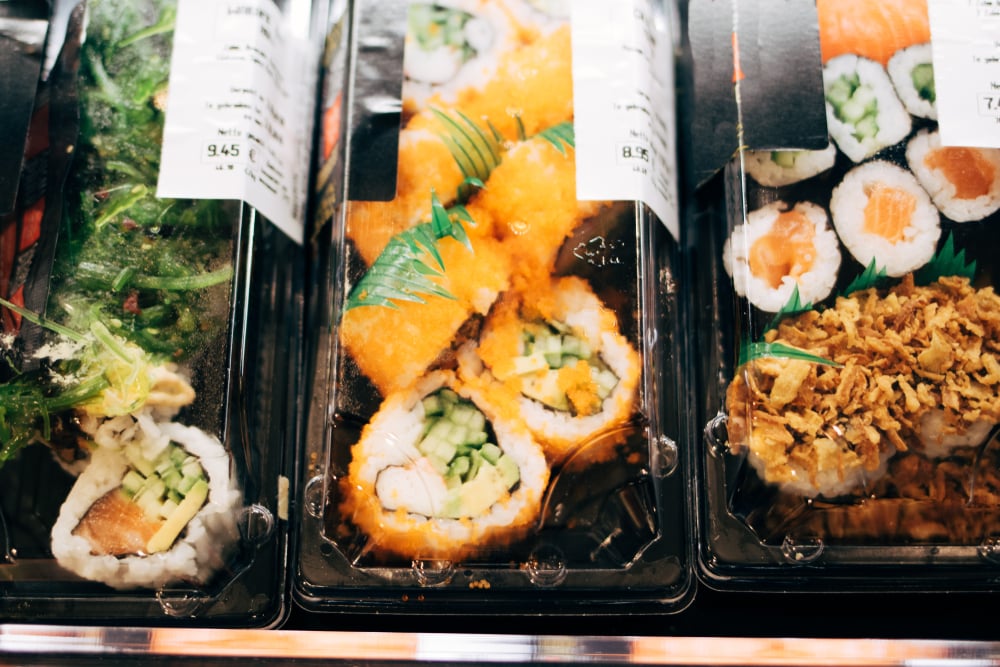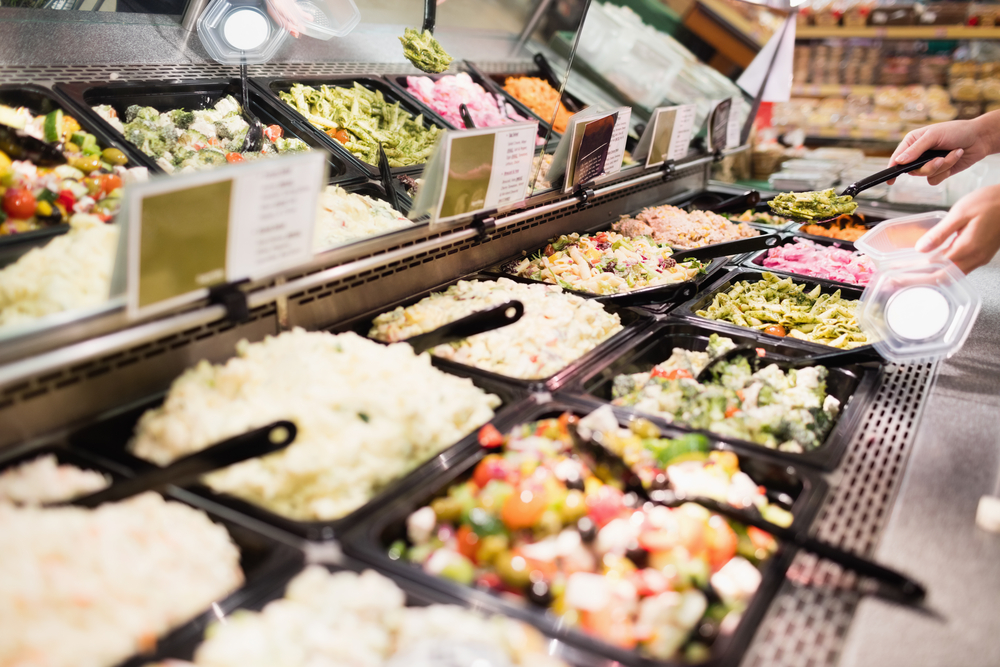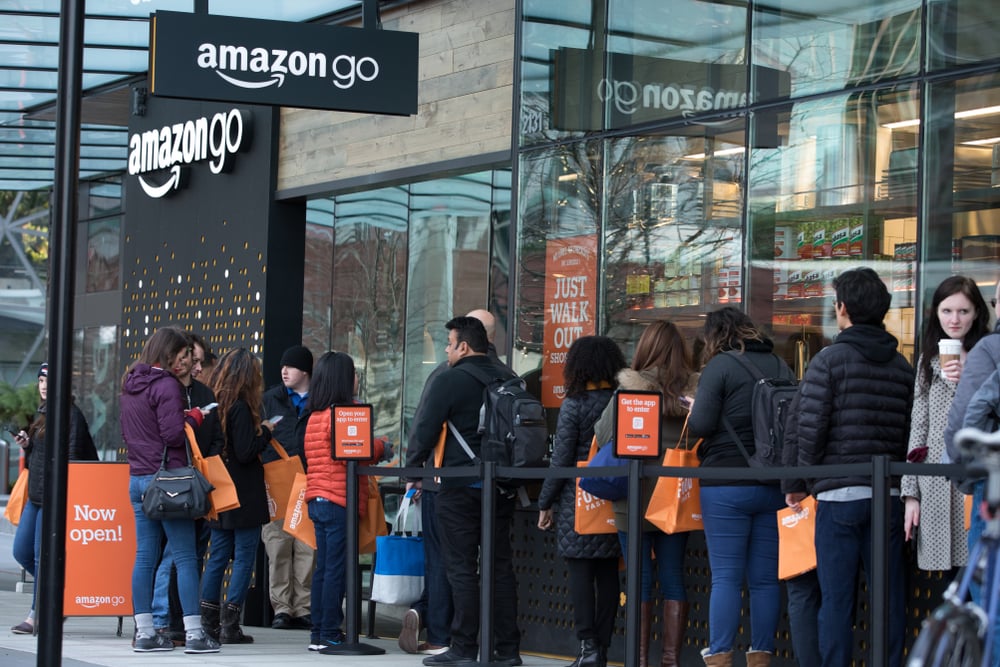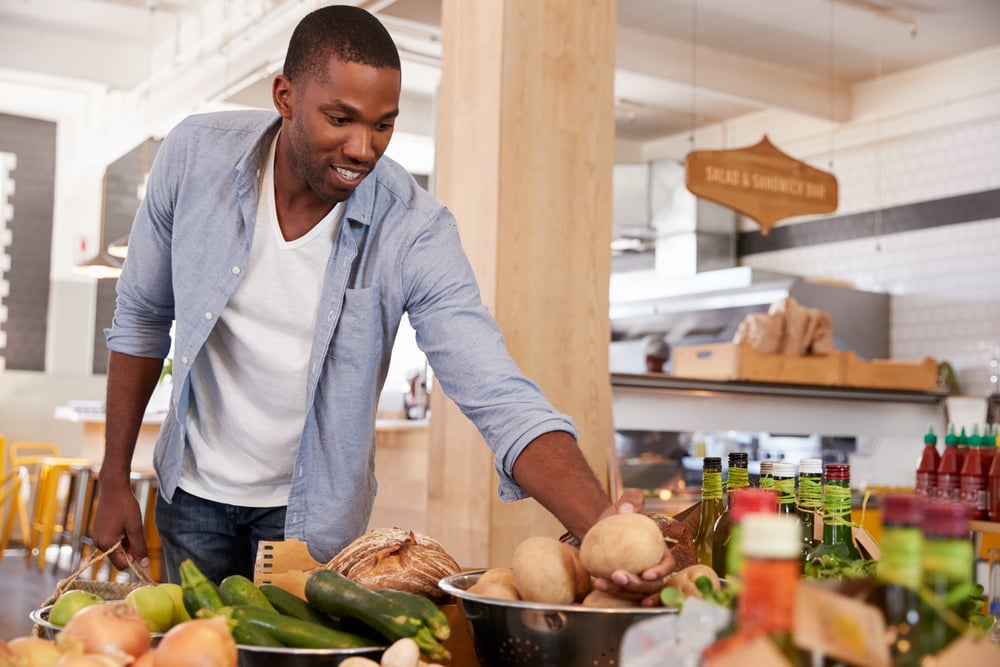Grocery is starting to get better at grab-and-go prepared foods, putting their best food forward as they step into a millennial-driven trend that sees an increased demand for clean and convenient mealtime options.
Restaurants, grocers, and convenience stores are all competing for these grab-and-go dollars. Indeed, restaurants are busting out front-of-store refrigeration units to serve the on-the-go lunch rush while c-stores’ prepared food keeps getting better while they bring us closer to the robot revolution with frictionless checkout
What can grocers do to compete? Well, we’ve put in the grocery industry market research so you don’t have to. Look, we generally don’t turn out how-to guides—was it the Joker who said, if you’re good at something, never do it for free?—but we’re going to make an exception because, well, we want to live in a world where everybody is good at prepared foods. Prepare yourself.
Why Prepared Foods, Why Now?
All the hubbub surrounding prepared foods makes sense when you consider the numbers: according to one study, the category is likely to reach $267 billion in sales by 2025, with a 5.2% compound annual growth rate during that period.

A lot of this is driven by millennials, who when it comes to grocery tastes and trends, are comfortably in the driver seat.
Indeed, millennials are greatly outpacing other generations when it comes to prepared food purchases: 77% of millennials (more than 3/4!) purchased prepared foods last year, 12% more than the 65% average among all generations of shoppers. Millennials also spend 6% more of their food budget eating away from home.
And when you are the biggest customer segment on the block, you get to call your own shots—millennials, to paraphrase the Backstreet Boys they grew up listening to (don’t lie), want it their way.
That means they want the millennial holy trinity: natural, unique, and convenient. And grocers are already catering to this.
One grocery chain branding director explained millennials’ appetite for prepared foods like this: “A lot of younger customers put more value on their food. Millennials insist on understanding where their food comes from, what makes it unique, and what points of distinction make this something they should be interested in."
Grocery Industry Market Research Tips on Perfecting Prepared Foods

It used to be that restaurants compete for meals and grocers compete for shopping trips. But with prepared foods and microtrips, grocers must now think of themselves like restaurants in some ways. To that end, here’s a few ideas for rolling out and perfecting a prepared food section.
- Don’t distribute prepared foods throughout the store based on type or some other organizing principle. Keep them all together, with beverage options as well, to inspire a sense of one-stop shopping.
- Make sure that section communicates abundance not scarcity—have several rotating items as well as a few tried and true mainstays. Give customers the comfort of knowing what to expect and the surprise of regularly having new items.
- Display ingredients, expiration dates, and clearly label organic/natural items as such. This builds trust among customers and also gives discerning consumers the green light. Remember: millennials read labels like Baby Boomers read TV Guide.
- Remember your audience. Nobody in Fresno wants your organic quinoa flavored lollipops. But those babies would light it up in the Bay just to Fresno’s west. Remember who your customers are and what they want. And along those lines, don’t be afraid to cut bait when a new concept doesn’t catch on. Stop trying to make fish a thing. It’s not going to happen.
- There may not be quinoa lollipop fans in every city, but millennials are everywhere. And they want interesting stuff. We are talking cashew chicken wraps, sushi roll samplers, cranberry feta toasted walnut salads. Even if you think your town is not into that kinda froofy fluff, trust us. You have uppity millennials in your midst, and they want this stuff.
- Time and efficiency are key. The whole reason people want prepared foods is to save time, right? Make sure there are express checkout options to get them in and out. Don’t treat prepared foods as a loss leader that will draw customers into your store—see them as a means to their own ends(meet).
Battling C-Stores: Omnichannel and Grocery Industry Market Research

There will be some competition for all these on-the-go dollars, and it won’t only come from grocers and restaurants. Amazon plans to open 3,000 Amazon Go c-stores by 2021, which will offer a cornucopia of prepared foods, and apparently Starbucks-branded robot lattes. They are also testing smaller Whole Foods concepts that centralize prepared foods.
In order to compete with this, grocers need to more fully integrate their prepared food offerings into omnichannel operations, namely click-and-collect and delivery.
Imagine a Venn diagram where one circle represents technological know-how, and the other circle represents purchasing power. Millennials, despite their recession-related economic woes, are the majority population in the overlapping region, meaning that they are unique combination of tech savvy and spending power. This means that, as the prepared foods category continues to expand, it will become increasingly omnichannel. And that’s why, as grocers prepare their prepared foods sections, they must also prepare themselves for a digital world.
For grocers, there is still some room to grow on this front—currently it seems that things like take-and-bake pizzas and cold chicken wings are regularly offered for these purchase channels, but the wraps, salads, sandwiches, and fun fare millennials crave have yet to be integrated.
This must change. Grocers must find ways to get their prepared foods to millennials when and how they want it. And omnichannel market research can take you a long way towards that goal. Understand how your customers interact with your brick-and-mortar and digital operations, and how they blend the two to best suit their needs and tastes.
Consider yourselves prepared.

